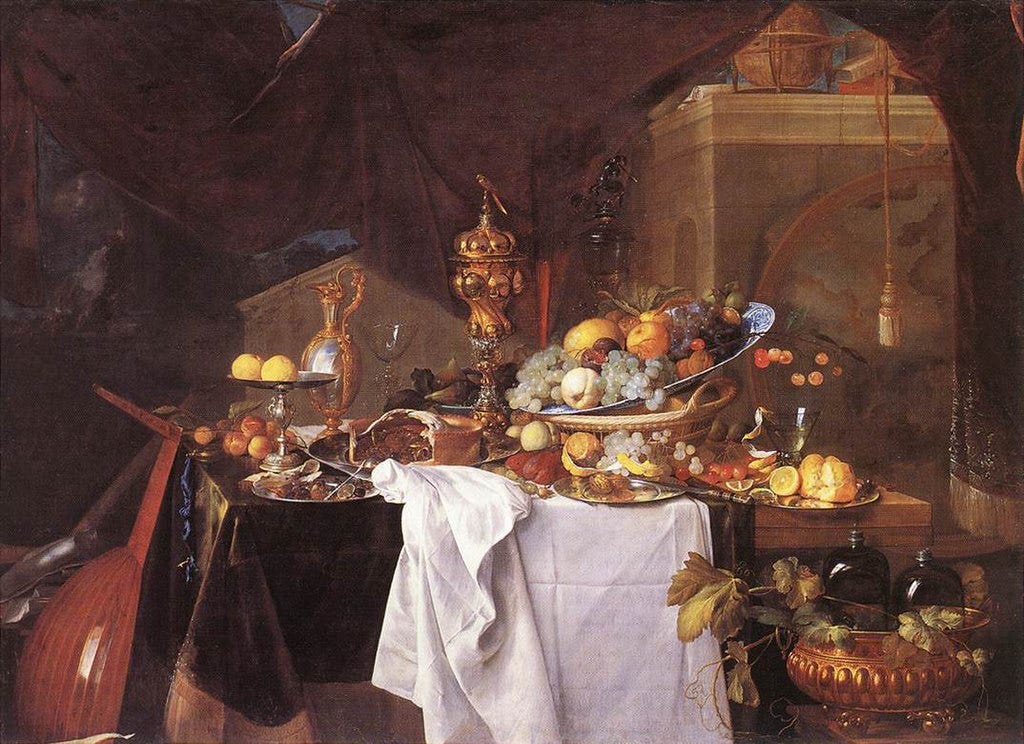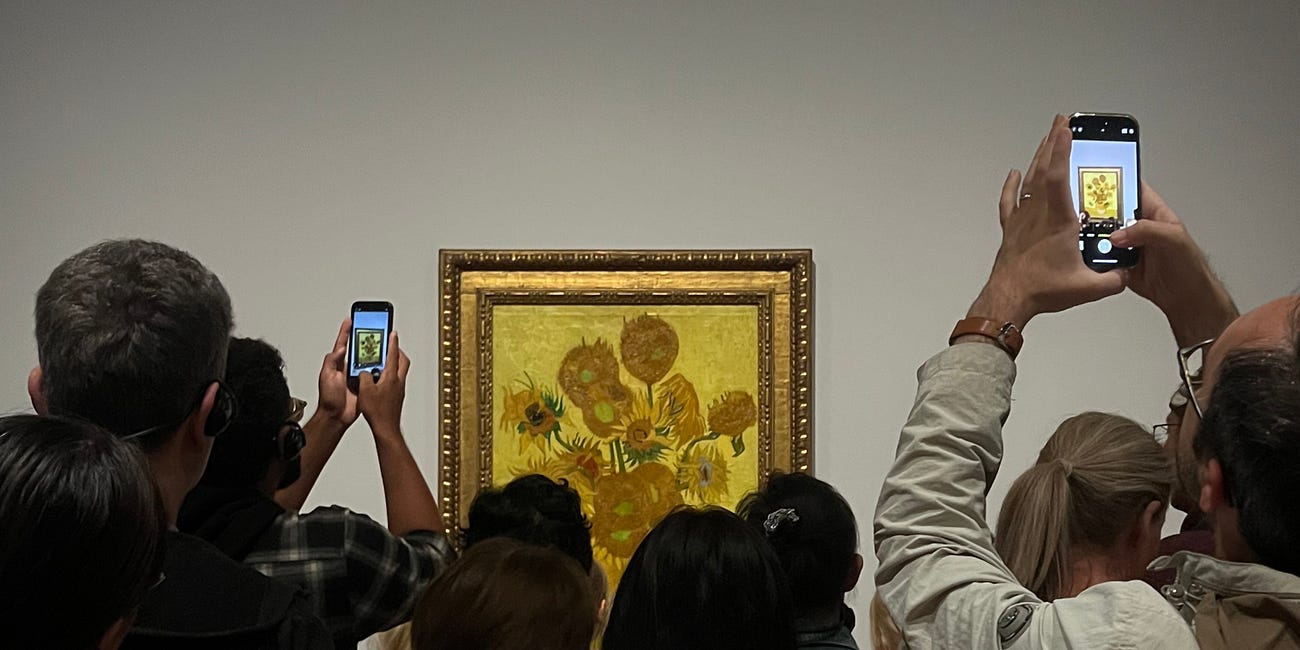Who has money for a museum?
Plus, Hong Kong Ballet announces its next project.
Last week I read Ocean Vuong’s The Emperor of Gladness (no comment) for my office book club. As soon as I finished it, I began Jenny Erpenbeck’s Kairos. Finally some good food!
I also published two pieces in Fjord Review, on Hong Kong Ballet’s The Butterfly Lovers and Kim Brandt’s Wayward for Rockaway Beach Dance Sessions.
Can you believe after the time and thought I put into this essay, the Dutch government still isn’t willing to give the Van Gogh Museum the funding it needs to make accessibility and infrastructural improvements that will help it stay open? The museum, which gets nearly 2 million visitors each year, gets $10 million from the government annually, and it is seeking an increase of $2.9 million to that subsidy, which it says will enable it to repair its elevators and climate controls, and make other necessary improvements, the New York Times reported. The government said: too bad!
Now, the government and the museum are going head-to-head and will likely resolve the dispute in court. The museum filed a legal complaint that says that government is acting in breach of its agreement with the Vincent van Gogh Foundation to take care of the collections.
I didn't expect to be moved at the Van Gogh Museum
There is a photo I take in art museums. It is not a selfie, nor is it a more deliberate one of myself posed next to whichever painting or sculpture most pleases me. I take plenty of snapshots of artworks that catch my eye—always in addition to their corresponding wall plaque for later identification. But these are not the ones that I look back on to give me a more defined and comprehensive sense of the space I inhabited. What I like to photograph is other people taking pictures, invariably with whatever is the most highly regarded, or identifiable, work of art in the room.
The Dutch government said that its subsidy “is a fixed amount that is corrected for inflation on an annual basis” and is “calculated according to a methodology which is used for all national museums.” Museum director Emilie Gordenker pointed out to the NYT, that it is not building a completely new wing, but rather making urgent repairs.
The Van Gogh Museum isn’t alone in its financing struggle, as several other major institutions try to figure out how to fund major renovations. The British Museum is undergoing a historic renovation called the “Masterplan,” for which it secured £50 million from BP. Director Nicholas Cullinan recently told El País that the renovation is absolutely necessary: “I mean, the roof will cave in if we don’t do something.”
The Louvre’s much-needed €800 million renovation is primarily being financed through revenue-boosting moves (increasing ticket prices, especially for non-EU visitors and courting rich donors. The first Le Grand Dîner du Louvre, held in March, raised €1.4 million for the museum (above the museum’s target of €1 million), proving that a Met Gala model could resonate in Europe. The Louvre’s first fashion exhibition, also recently became its second-most visited exhibition ever, after its 2019 Da Vinci show. The goal of “Louvre Couture,” museum president and director Laurence Des Cars said, was to attract “new generations of visitors with different cultural references.”
These funding strategies are not an easy fix, and some warn of the downstream effects of focusing on philanthropy and surging ticket prices: “We are in the process of making a museum for the rich,” Alexis Fritche, a union representative at the Louvre told the Financial Times.
That said, state funding comes with its drawbacks too, when you realize that the government can pull grants without warning and try to exert control over historical narratives and representation within museum’s exhibitions. Ahem. Anyway, Philadelphia’s Woodmere Art Museum sued the Trump administration last week, saying that the Institute of Museum and Library Services unlawfully terminated a $750,000 grant that the institute awarded it in 2024, Bloomberg Law reported.
Trump and Lonnie G. Bunch III, the Smithsonian’s secretary, also had lunch last week, the New York Times reported, but we don’t yet know what came out of that meeting.
Here’s an actually cool way the über-rich are supporting the arts and humanities without pushing their own views. Berlin’s Spore Initiative—a community space that philanthropist (and former venture capitalist) Hans Schöpflin established in 2023—is thriving. After the death of his 19-year-old son in 1995, Schöpflin redirected his energy away from the tech boom of Silicon Valley and into philanthropy, the Financial Times reported.
Today, Spore is a place for open dialogue, in particular regarding Israel’s war in Gaza—an issue that has led other institutions to lose funding. Schöpflin, who has pushed against the view that equates criticism of Israel’s government with antisemitism, plays no part in Spore’s programming, instead leaving that job to an independent artistic director Antonia Alampi and her team. And honestly the programming looks really good.
Amy Sherald, who pulled her exhibit “American Sublime” from the Smithsonian’s National Portrait Gallery, authored an op-ed in MSNBC, “Censorship has taken hold at the Smithsonian. I refused to play along.”
She writes about the history of governments seizing museums for their own aims and the impact of censorship on society. “Museums are not stages for loyalty,” she says. “They are civic laboratories. They are places where we wrestle with contradictions, encounter the unfamiliar and widen our circle of empathy. But only if they remain free.”
This looks cool: Hilton Als has curated a new exhibit that will open in London’s Michael Werner Gallery on September 12 and focuses on the author Jean Rhys, articulated through “artworks that evoke her spirit,” the FT reported. Rhys, who was born and raised in the Caribbean, on the island of Dominica, and later emigrated to England, is best known for her 1966 novel, Wide Sargasso Sea, a prequel to Charlotte Brontë’s Jane Eyre. “When I began thinking about this exhibition several years ago, I began to imagine how to make a kind of portrait of the artist through art,” Als writes. “How we could not so much capture but render what [Colin] MacInnes said in his review was a hallmark of Rhys’s writing: her ‘lucid yet pictorial’ style. Which visual artists spoke to me or evoked Rhys’s language most powerfully, and which artists would Rhys, in turn, be intrigued by?”
I am also very excited about the Met’s major Raphael exhibition that will open in late March and run through June 28. Met curator Carmen Bambach—who also organized the museum’s 2017 Michelangelo show—will assemble the exhibit, ArtNews reported.
Keep reading with a 7-day free trial
Subscribe to Mezzanine Society to keep reading this post and get 7 days of free access to the full post archives.





